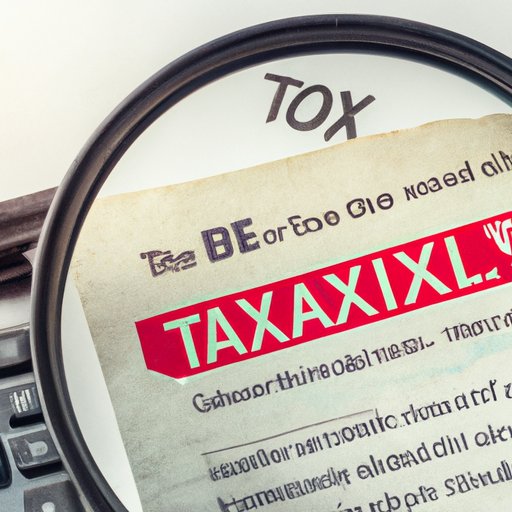Introduction
Cryptocurrency staking is an increasingly popular way for investors to earn passive income from their digital assets. But is crypto staking worth it? In this article, we’ll explore the advantages and disadvantages of crypto staking, as well as the potential returns and risks associated with it. By the end, you should have a better understanding of whether crypto staking is right for you.
Exploring the Pros and Cons of Crypto Staking
When considering whether or not to engage in crypto staking, it’s important to weigh the pros and cons. Let’s take a look at some of the major advantages and disadvantages of crypto staking.
Advantages
One of the major benefits of crypto staking is the potential for high returns. As with any type of investing, there are no guarantees, but those who stake their cryptocurrencies can potentially earn more than they would by simply holding their coins. This is because when you stake your coins, you are rewarded with additional coins.
Another advantage of crypto staking is that it requires relatively low investment requirements. Unlike mining, which requires expensive equipment and large amounts of electricity, crypto staking only requires a relatively small amount of funds to get started. This makes it attractive for both experienced and novice investors.
Finally, crypto staking offers a steady source of passive income. Unlike other forms of investing, such as stock trading or day trading, crypto staking does not require active involvement. Once you set up your staking wallet, your coins will begin to generate rewards automatically.
Disadvantages
As with any form of investing, there are some risks associated with crypto staking. The most obvious risk is volatility. Cryptocurrencies are notoriously volatile, and the value of your coins can go up or down quickly. This means that your rewards could be significantly less than expected, or even non-existent.
In addition to volatility, there are also security risks associated with crypto staking. If your computer or online wallet is hacked, your coins could be stolen. This is why it’s important to use secure wallets and protect your private keys.
Finally, there are tax implications to consider when engaging in crypto staking. Depending on where you live, you may be required to report your crypto staking earnings to the government. It’s important to research the tax laws in your jurisdiction before engaging in crypto staking.
An In-Depth Look at Crypto Staking Rewards
Now that we’ve discussed the pros and cons of crypto staking, let’s take a closer look at the rewards. When you stake your coins, you will receive rewards in the form of block rewards and transaction fees.
Types of Rewards
Block rewards are the rewards you receive for verifying transactions on the blockchain. These rewards are distributed to stakers who help validate transactions. The amount of the reward depends on the complexity of the transaction and the number of coins staked.
Transaction fees are the fees charged for transferring coins from one wallet to another. These fees are paid out to stakers who help process the transaction. The amount of the fee depends on the size of the transaction and the amount of coins staked.
In addition to these two types of rewards, stakers can also benefit from compounding interest. This is when the rewards earned from staking are reinvested into the same cryptocurrency, resulting in additional returns over time.
What is Crypto Staking and How Does it Work?
Now that we’ve covered the basics of crypto staking, let’s take a closer look at how it works. In order to stake your coins, you will need to set up a staking wallet. This is a special type of wallet that is designed to store your coins and allow you to stake them.
Once you have your staking wallet set up, you will need to select a staking platform. There are several different platforms available, each with its own set of features and fees. You will need to research these platforms to find one that fits your needs.
Once you’ve selected a platform, you will need to deposit your coins into the wallet. You can then start staking your coins and earning rewards. Most platforms offer automated staking, so you don’t have to actively monitor your staking activity.
Are Crypto Staking Returns Worth the Risk?
Before you decide to invest in crypto staking, it’s important to analyze the potential returns and risks. Let’s take a look at how to do this.
Analyzing Profitability
The first step in assessing the profitability of crypto staking is to calculate the potential returns. To do this, you will need to estimate the amount of rewards you will receive over a certain period of time. You can do this by researching the current block rewards and transaction fees for the cryptocurrency you are staking.
Examining Market Trends
In addition to calculating potential returns, it’s also important to examine market trends. It’s important to keep an eye on the price of the cryptocurrency you are staking, as well as the general market conditions. This will give you a better idea of whether or not staking is likely to be profitable in the long term.
Determining Risk vs. Reward
Finally, it’s important to assess the risk vs. reward of crypto staking. As with any form of investing, there is always the risk of losing money. It’s important to weigh the potential returns against the potential losses to determine if the risk is worth taking.

Analyzing the Profitability of Crypto Staking
Now that you’ve considered the potential returns and risks of crypto staking, it’s time to analyze the profitability of the venture. To do this, you will need to calculate the potential returns based on the current market conditions.
Calculating Potential Returns
The best way to calculate potential returns is to research the current block rewards and transaction fees for the cryptocurrency you are staking. You can then calculate the estimated returns over a given period of time.
Factors Influencing Profitability
It’s important to remember that the profitability of crypto staking depends on a variety of factors. The amount of rewards you receive will depend on the current market conditions, as well as the number of coins you are staking. Additionally, the amount of rewards you receive can vary depending on the staking platform you are using.

Examining the Tax Implications of Crypto Staking
In addition to the potential returns and risks of crypto staking, it’s also important to consider the tax implications. Depending on where you live, you may be required to report your crypto staking earnings to the government. It’s important to research the tax laws in your jurisdiction before engaging in crypto staking.
IRS Rules and Regulations
In the United States, crypto staking is subject to federal taxes. According to the IRS, crypto staking earnings are treated as capital gains, and must be reported on your annual tax return. Additionally, you may be subject to self-employment taxes if you are engaging in crypto staking as a business.
Reporting Requirements
It’s important to note that the reporting requirements for crypto staking vary depending on where you live. For example, some countries may require you to report your earnings on a quarterly basis. It’s important to research the reporting requirements in your jurisdiction before engaging in crypto staking.

Comparing Crypto Staking to Other Investment Options
Before you decide to invest in crypto staking, it’s important to compare it to other investment options. Here are some of the key differences between crypto staking and other forms of investing.
Comparing Returns
When comparing crypto staking to other forms of investing, it’s important to consider the potential returns. Generally speaking, crypto staking has the potential to generate higher returns than traditional investments such as stocks or bonds. However, it’s important to remember that there are no guarantees, and the returns may not be as high as expected.
Assessing Risk
It’s also important to consider the risks associated with crypto staking. As with any form of investing, there is always the risk of losing money. Additionally, crypto staking carries the risk of theft, fraud, and market volatility. It’s important to weigh the potential rewards against the potential risks before investing.
Conclusion
Crypto staking is an increasingly popular way for investors to earn passive income from their digital assets. While there are potential rewards, there are also risks associated with crypto staking. It’s important to weigh the potential rewards against the risks before deciding whether or not it is worth investing in.
By analyzing the potential returns, examining market trends, and researching the tax implications, you can make an informed decision about whether or not crypto staking is the right investment for you. With the right due diligence, crypto staking can be a lucrative and rewarding endeavor.
(Note: Is this article not meeting your expectations? Do you have knowledge or insights to share? Unlock new opportunities and expand your reach by joining our authors team. Click Registration to join us and share your expertise with our readers.)
